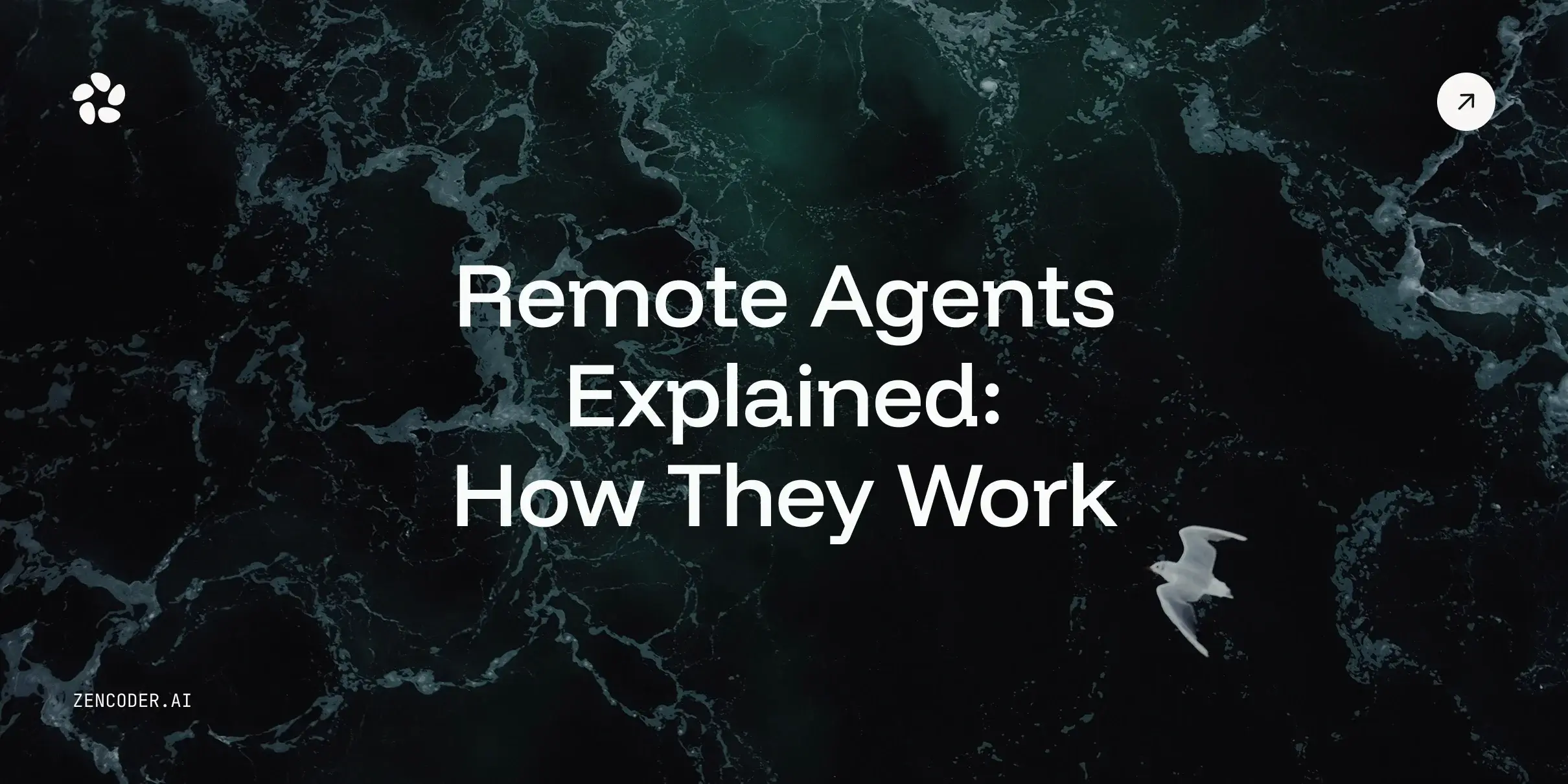As software development sprints into the future, clear and consistent code documentation often takes a back seat. Yet, it remains the unsung hero of maintainable and collaborative projects. Enter automated docstring generation – a paradigm shift in code clarity, offering an elegant solution to the age-old struggle between writing code and documenting it. Many developers are now exploring how to use AI in coding to streamline such processes.
As we delve into the world of automated docstring generation, we'll uncover how this technology is transforming codebases from cryptic labyrinths into well-lit landscapes of logic.
From boosting developer productivity to enhancing code maintainability, the impacts are far-reaching and profound. So buckle up - we're about to explore a tool that's not just changing how we document code, but how we think about code itself.
The Documentation Dilemma: More Than Just Comments
Imagine you're a developer revisiting code you wrote months ago. You stare at the screen, trying to decipher your past self's logic. Sound familiar? You're not alone. This common scenario highlights the critical importance of good documentation.
As one developer put it, “Out of all the perks, the one that has truly saved me is the power to remember my past deeds.”
But documenting code isn't just about plastering comments everywhere. It's about crafting meaningful summaries that enhance readability and help developers understand the purpose of code without diving into the nitty-gritty details.
Automated Docstring Generation: Your Code's New Best Friend
Automated docstring generation tools analyze your code and create informative documentation strings. These tools, often part of sophisticated AI coding agents, provide instant clarity for functions, classes, and modules, significantly enhancing code readability and maintainability.
How It Works: The Magic Behind the Scenes
- Code Analysis: The tool examines your code's structure, parameters, and return values. Technologies like Repo Grokking™ can offer deep code insights for this.
- Natural Language Processing (NLP): It uses Natural Language Processing (NLP) to extract meaning from existing comments and variable names.
- Template-Based Generation: Predefined templates structure the documentation.
- Type Annotations Integration: Modern tools leverage type information for more precise docstrings.
Automated Docstring Generation: Enhancing Code Quality
Automated docstring generation tools analyze your code and create informative documentation strings. Here are some key C# examples:
Using <example>
|
/// <summary> |
Explanation: The <example> tag provides a quick usage demonstration.
Using <returns>
|
/// <summary> |
Explanation: The <returns> tag clearly describes the return value's meaning.
Using <remarks>
|
/// <summary> |
Explanation: The <remarks> tag adds important additional information.
Using <seealso>
|
/// <summary> |
Explanation: The <seealso> tag links to related functionality.
These examples show how automated docstring generation can use various tags to provide comprehensive, yet concise documentation. This approach enhances code quality by:
- Offering usage examples for better understanding.
- Clearly explaining return values.
- Providing additional context through remarks.
- Linking related functionality for easier navigation.
By leveraging these tags in automated docstring generation, developers can create more informative and user-friendly documentation with minimal manual effort. Understanding why poor code quality hurts your development and how to fix it can further motivate the adoption of such tools.
The Benefits: Why Automated Docstring Generation Matters
1. Increased Code Clarity
Automated docstrings provide a clear understanding of each component's purpose, inputs, and outputs. This clarity is crucial for developers working on large, complex projects.
2. Improved Developer Experience
By automating the documentation process, developers can focus more on writing high-quality code. This leads to increased productivity and job satisfaction. The improved developer experience translates to faster onboarding for new team members and smoother collaboration across the team. This is a key aspect of the human-AI partnership in redefining developer roles.
3. Enhanced Maintainability
Well-documented code is easier to maintain and update. Automated docstrings make it simpler for developers to modify or extend functionality without introducing bugs. This is particularly important for long-term projects or when dealing with legacy code, where AI-driven refactoring can address legacy system challenges.
4. Consistency is Key
One of the biggest challenges in maintaining large codebases is ensuring consistent documentation style. Automated tools enforce a standardized format, creating a uniform look and feel throughout your codebase. This consistency helps reduce errors and misunderstandings that can arise from inconsistent documentation styles. AI for code governance plays a significant role here.
5. API Clarity
Clear documentation is especially crucial for APIs. Automated docstring generation helps create comprehensive API documentation, making it easier for other developers to integrate and use your code. This improved API clarity can lead to better adoption of your software and fewer support requests.
Beyond Basic Automation: Advanced Techniques
Machine Learning for Code Summarization
Recent advancements in machine learning have led to models capable of generating concise and accurate code summaries. These models analyze code structure and patterns to produce human-readable descriptions, further reducing manual effort.
For example, a machine learning model might analyze a complex function and generate a summary like this:
|
def process_data(input_data, threshold=0.5, |
This automated summary provides a quick overview of the function's purpose without the need for manual documentation. The concept of context-aware code completion is closely related, where AI predicts and understands code.
IDE Integration for Real-Time Suggestions
Many popular Integrated Development Environments (IDEs) now offer plugins or built-in features for automated docstring generation. These integrations provide real-time suggestions as developers write code, making it easier than ever to maintain up-to-date documentation. Zencoder, for instance, offers integrations with popular IDEs.
For instance, in Visual Studio Code, you might start typing a function, and the IDE would automatically suggest a docstring template:
|
def calculate_area(length, width): |
This real-time assistance ensures that documentation is created alongside the code, reducing the likelihood of outdated or missing documentation.
Overcoming Limitations and Considerations
While automated docstring generation tools have come a long way, they're not perfect. Complex logic or domain-specific knowledge may still require manual refinement. It's essential for developers to review and adjust generated docstrings as needed.
Some challenges to consider:
- Over-documentation: Automated tools might generate verbose docstrings for simple functions. Developers should strike a balance between comprehensive documentation and concise, readable code.
- Context understanding: Current tools may struggle with understanding the broader context of a function within a system. Human oversight is crucial to ensure documentation accurately reflects the function's role in the larger architecture.
- Maintenance of generated docs: As code evolves, generated docstrings need to be updated. Implementing a process to regularly review and update documentation is essential.
Encouraging a Docstring Culture
To make the most of automated docstring generation, teams should:
- Establish clear guidelines for docstring content and style.
- Emphasize well-written docstrings during code reviews.
- Integrate docstring generation into the continuous integration pipeline. Autonomous Zen Agents for CI/CD can help automate such processes.
- Provide training on the importance of good documentation and how to use automated tools effectively.
Measuring the Impact: Code Quality Metrics
To track the effectiveness of automated docstring generation, consider these metrics:
- Code Coverage: Aim for near-complete test coverage (80% and above) to ensure your documentation efforts are matched by robust testing.
- Cyclomatic Complexity: Use tools to measure and reduce the complexity of your functions. Lower complexity often correlates with easier-to-document code.
- Code Churn: Monitor how often code changes. High churn might indicate areas needing better documentation or refactoring.
- Documentation Coverage: Track the percentage of code elements (functions, classes, modules) that have docstrings.
- Developer Satisfaction: Conduct surveys through online forms to gauge how helpful developers find the generated documentation.
Case Study: Python's Docstring Revolution
Python has long been at the forefront of promoting clear documentation through docstrings. Tools like Sphinx and Google's pytype have revolutionized how Python developers approach documentation, leading to more maintainable and accessible codebases.
For example, the popular requests library uses comprehensive docstrings:
|
def get(url, params=None, **kwargs): |
This level of detail in docstrings has contributed to requests becoming one of the most widely used Python libraries.
The Future of Automated Docstring Generation
As artificial intelligence continues to advance, we can expect to see more sophisticated documentation assistants. These AI-powered tools may not only generate docstrings but also provide suggestions for improving code structure and readability. The evolution of AI coding agents points towards this future.
Potential future developments include:
- Context-aware documentation: AI models that understand the broader context of a codebase and generate documentation that reflects relationships between different components.
- Natural language querying: Systems that allow developers to ask questions about the codebase in natural language and receive relevant documentation snippets.
- Cross-language documentation: Tools that can generate consistent documentation across multiple programming languages in a single project.
Conclusion: Embracing the Future of Code Documentation
Automated docstring generation isn't just a tool; it's a catalyst for a new era of code clarity. By seamlessly blending advanced technologies like NLP and machine learning with the art of programming, it's redefining what it means to write "good" code. The days of choosing between writing code and documenting it are fading into obsolescence. For more on this evolving landscape, you might find "The Vibe Coding (or Zen Coding) Spectrum. The Rise of AI-Directed Development" an interesting read.
As we look to the horizon, the potential of this technology is boundless. From context-aware documentation to cross-language compatibility, the future promises even more sophisticated ways to illuminate our code. But the real power lies not just in the tool itself, but in how we wield it. By embracing automated docstring generation and fostering a culture that values clear communication through code, we're not just improving our projects - we're elevating the entire field of software development.
In the end, automated docstring generation is more than a convenience; it's a commitment to code that speaks volumes, even in silence. It's time to let our code tell its own story, clearly and eloquently, for generations of developers to come.


![Save 90% on AI Costs Using Claude, Codex & Gemini [Guide]](https://zencoder.ai/hubfs/Universal_CLI_04.png)
